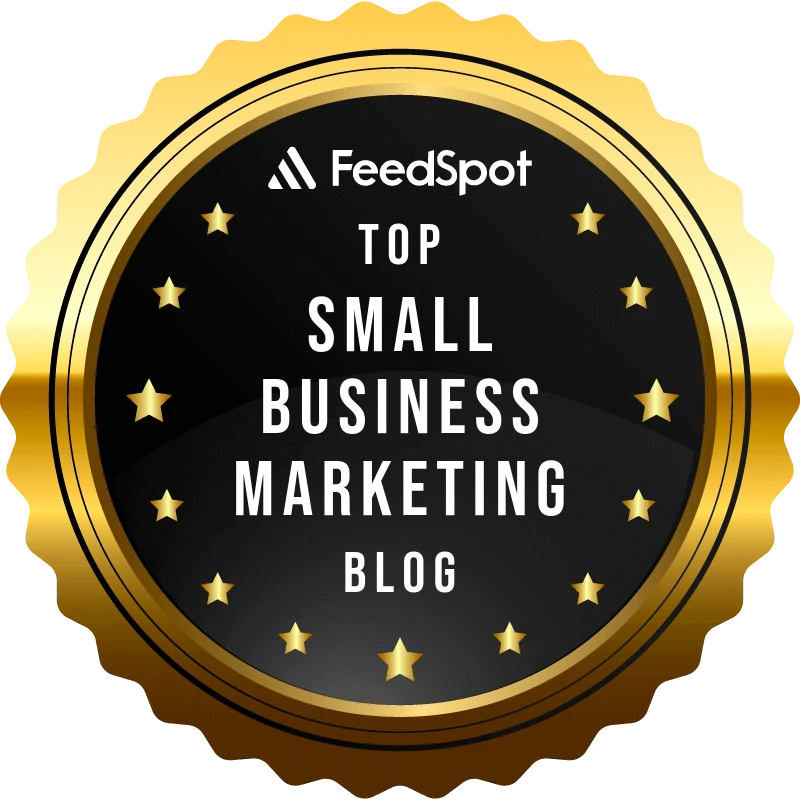
Influencer Marketing for Small Business – Can you really get a serious ROI?
The best advertising is advertising someone else does for you, which is why influencer marketing for small business comes in handy.
Consumers are so bombarded and often a little distrustful of companies running around online, saying, “Buy from us. We’re the best.” You’re more likely to see a positive ROI when other people say how great you are. This is why you should consider adding influencer marketing to your marketing plans.
In the article, we’re going to tell you what to expect from the world of influencer marketing for small business, provide some tips for getting the best value from this marketing tactic, and help you find the right influencers.
What is influencer marketing for small business?
Influencer marketing is a fancy way of saying you pay people to talk about your products and company. If done correctly, it’s a great way to build brand awareness in new social circles. Think of it as social proof for your business.
In the past, “influencers” were limited to famous celebrities. With the rise of social media, influencers can be nearly anyone with a good niche following. Businesses will research influencers in their customer niche and approach them about a partnership. Often the business will pay the influencer to talk up their company and provide them with samples and digital resources to use in their content creation.
Influencer marketing was estimated to be worth $9.7 billion in 2020 and a whopping $13.8 million in 2021. It’s become popular on many social media platforms but is most popular on:
- Instagram (67%)
- TikTok (45%)
- Youtube (36%)
Influencer Marketing for small business. Is it worth it?
90% of businesses surveyed believe influencer marketing to be an effective form of marketing, yet only 67% of companies say they measure the effectiveness of their influencer campaigns. This means having systems to track clicks, comments, and likes, and correlating that data to sign-ups or sales.
In addition to ensuring you have the right tracking in place to measure the success of your small business influencer marketing, it’s also recommended that you design your programs around campaigns rather than an “always-on” approach. In other words, work with influencers within specific promotions or campaigns, rather than just asking them to promote your business once a week for an entire year. This helps your content creators create more specific content with a higher chance of converting than genericized endorsements. For example, you could highlight a certain product line or theme every four weeks.
How can small businesses find the right influencers?
There are 5 tiers of influencers, based on how many followers they have:
- Nano-influencers (1,000 to 10,000)
- Micro-influencers (10,000 to 50,000)
- Mid-tier influences (50,000 to 500,000)
- Macro-influencers (500,000 to 1,000,000)
- Mega-influencers (1,000,000+)
It may seem counter-intuitive to think that smaller influencers would have the potential for a bigger ROI, but it’s true. On Instagram, micro-influencers have an average engagement rate of 3.86%, and mega influencers typically get 1.21% on the same platform. TikTok is seeing an 18% engagement rate from micro-influencers and just under 5% for mega-influencers.
Unless you’re using an influencer marketing program to search for ideal influencers to collaborate with, here are some ways to find the right ones:
- Ask your customers: Ask your current customers how they found you or who they follow on social media in your niche. This could uncover both micro- and macro-influencers.
- Do a Google search: Do a Google search for “Social media influencers in [topic/niche].” This is likely to uncover influencers with larger followings this way.
- Conduct audience research. Rand Fishkin developed a new software service called SparkToro that helps you do targeted audience research. It searches social and web profiles to help you learn more about your audience and potential influencers. It has paid subscriptions, but the free version is quite robust to get started.
No matter how you find your influencers, make sure they align with your brand values and niche. For example, if you sell bacon, you could find the most influential Instagrammer who talks about bacon, but if he talks about why bacon is bad for your health, that’s not the kind of person you want promoting your yummy maple bacon brand.
Which influencer marketing platforms are best for small businesses?
You can seek out social media influencers on your own, but sometimes using an influencer marketing platform can help you narrow your search and manage your campaigns with higher efficiency. Here are some of the most popular influencer marketing platforms:
- #paid – This creator marketing platform helps you track down influencers in your niche and provides tracking so you can measure your ROI for each campaign and influencer. (starting at $449 per month)
- Dovetail – With this app, you can organize your influencer campaigns, including application forms, sending of samples, tracking affiliate sales, and payouts. (starting at $0-19 per month)
- GRIN – This is an all-in-one creator management platform to manage your entire influencer marketing campaigns. (contact them for a quote)
- Influencity – This app has a powerful AI with over 60 functionalities to execute end-to-end campaigns with influencers (starting at $48 per month)
How much do small businesses spend on influencers and micro-influencers?
There is no standard rate to pay an influencer. They could be paid in “cash,” free or discounted product, or a combination. Their compensation may also be based on:
- Their follower and engagement stats
- The channels they use
- How often and what they post
- How much effort is expected of them
- If there is any cross-promotion
- Agency fees (if they have an agent)
All these variables come into play when deciding influencer rates, but here are some ranges based on Nano, Mid-tier and Mega influencers for the top three social media channels:
- Instagram: $10 – 100 / $500 – 5,000 / $10,000+ per post
- TikTok: $5 – 25 / $125 – 1,250 / $2,500 per post
- YouTube: $20 – 200 / $1,000 – 10,000 / $20,000+ per post
In a 2019 survey, businesses make an average of $5.20 for every dollar spent on influencer marketing (some businesses are making upwards of $20 per dollar invested). The same survey found that only 25% of influencer marketing campaigns fail. Why? They’ve likely partnered with the wrong influencers.
What legal aspects do small businesses need to know?
It’s also important that you follow all rules and guidelines for influencer marketing. In Canada, the Competition Act applies. These laws are in place to prevent deceptive marketing practices and require a disclosure to be included with all promotional material.
There are several other rules and regulations for those being compensated for a review in the US.
For the most part, when the influencer posts about your business, they must make a clear statement linked to the content that they are being paid for their opinion. They are still under an ethical obligation to provide a truthful review..
Steps to starting your successful influencer marketing campaign for small business
Now that you have some expectations about influencer marketing and how it works, here’s the quick, step-by-step guide to planning and executing your influencer marketing campaigns:
- Create personas: Know who your target customer is and where they “hang out” online with as much specificity as possible.
- Know your budget: Plan how much budget or product you can dedicate for this part of your marketing program.
- Use an influencer marketing platform: Start your search and create a shortlist of potential influencers to approach for your next campaign.
- Start with micro influences: Start with smaller influencers and smaller budgets to test your creative and ensure you have the right audience. Then expand to more influential influencers.
- Approach blogging influencers: Get a few influencers to talk about you on their blog. A great added benefit of this is it helps your search engine optimisation (SEO) or link-building strategy with a backlink (or two) to your website.
- Check for legal compliance: Ensure your campaigns follow the rules and laws of your markets and social platforms.
- “Train” your influencers: Take time to educate your influencers about your product. Focus on the USPs and give the influencer some freedom to add their unique spin on the content creation process to not alienate their fans and your potential ROI.
Overall, influencer marketing is a great way to get endorsements from others. If you execute your plan ethically and responsibly, its potential as a brand-building and sales converting strategy can be significant.
Want some help to kick-start your next influencer marketing or social media campaign? The Out-Smarts team is waiting to chat with you. Book a free discovery call to learn more about how we can help you up-level your digital marketing.
Read more articles:


